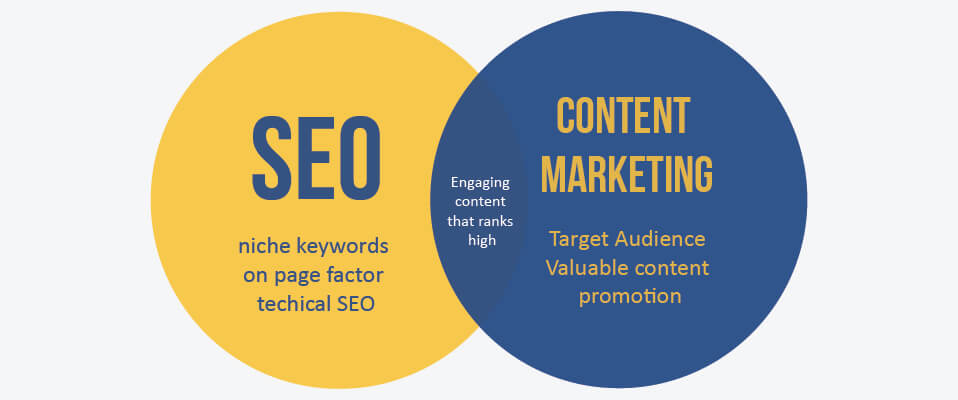Search Engine Optimization (SEO) is becoming increasingly important for every online business. The reason? SEO is one of the key ways consumers find your business online – utilising SEO writing amongst other strategies – so where you rank is vital. According to Backlinko, the top slot on Google has a 27 percent click-through rate, while the second page receives only a 0.63 percent CTR. An SEO competitive analysis (as a supplement to a comprehensive digital marketing competitive analysis) can show you what your rivals are doing with SEO and how you compare. It will show your strengths and shortcomings so you may develop a strategy to keep you ahead of them in the rankings (Google and Bing).
Discover Your True Competitors-
The first step in learning how to do competition analysis is to conduct one. The goal of SEO is to identify the competitors. We propose that you identify who your genuine rivals are for your keywords, since not all websites that rank higher than yours for a keyword are your competitors. In order to uncover your genuine SEO competition in your SEO study, you must be comprehensive and exact. This entails performing SEO comparison and study on various keywords and noting the top ten or twenty websites that appear consistently for all of them.
One method is to utilise a free SEO analytics tool such as Ubersuggest. Due to the fact that Ubersuggest is a free service, the amount of keywords and top-ranking websites available for competition SEO analysis may be restricted. To go further into SEO comparison data and obtain reliable findings, a paid SEO tool such as Ahrefs may be required.
Examine the Top Pages of Your Competitors-
It is also critical to find the most popular pages of your competition.Take notice of the following:
- Which pages rank the highest for the most keywords?
- Which pages are the most popular?
- Which pages account for the greatest proportion of total traffic?
Competitors can sometimes bring significant attention to a certain page or collection of sites.Never assume you know which pages on a competitor\’s site are the most popular. Expect some surprises if you investigate it as part of the competitive analysis process.
Study their Keywords-
You may be performing well for your major keywords, but what about the ones for which you rank but are at the bottom of page one of the SERP? Pay attention to those keywords since including them into your article may help you overcome your opponent and land a place ahead of them. Look for keyword gaps and keyword possibilities as well. This can assist you in identifying keywords or phrases for which you could and should rank utilising tools such as SEMRush or AHREFS.
You could also consider any keywords that your rivals may have lost but still have a high search traffic. Check where they are dropping in the rankings, visit the website and see if you can find out why. Then seize the chance by developing content that incorporates those keywords. Let\’s get started.
What you\’ll need to map your keywords to the purchase cycle is as follows:
- The path of your consumer.
- The terms associated with each step of the journey.
- The level of competition for these keywords at each stage.
- How to locate these keywords and compete with them.
To generate relevant keywords, use the following formulae:
- familiarity with [Name of the brand].
- Product name- characteristics.
- Product name- advantages.
- [Brand/Product Name] in comparison to [Competitor brand/Competitor product].
- [Brand/Product name] testimonials.
- Best [Product group].
- Particular product.
Investigate their On-Page Optimization-
Your competitors may outrank you in SEO because they invest time and effort improving their pages. As a result, you must examine the pages that are outranking you. This will assist you in determining why your rivals are performing better in terms of search engine positioning.
The following elements should be considered in your analysis:
Titles – It is crucial to Google since they demonstrate how relevant a term is to a search and are a ranking factor. As title tags inform browsers how to show your page\’s title in search results, social media, and browser tabs, make sure they are proper and linked to the relevant keyword.
Meta-data – It is required for meta keywords and meta description tags. Both will assist Google in determining the topic of your page. See what your rivals are doing to optimise their search results.
Headlines or headings – Google prefers headings and gives h> tags weight when they are connected to certain keywords. They may also be used for highlighted snippets, which will push your material to the top of the page. According to Ahrefs, when Google skips the title tag, it utilises H1 tags roughly 51% of the time instead.
Research Competitor Backlink Profiles-
One of the most significant aspects of a competitive analysis is determining where your competitors\’ backlinks come from and leveraging that knowledge to develop high-quality links for your website.Examining your competitors\’ link profiles is a wonderful method to discover fresh link opportunities.Again, you\’ll need a powerful SEO tool for this phase; it\’s nearly difficult to accomplish manually.Using Ahrefs, SEMrush, or Moz to gain insights into your rivals\’ backlink profiles, you can learn a lot. Yet, it is not about the amount of backlinks. Quality backlinks are what you want, and they are an excellent complement to any piece of content.
In fact, low-quality backlinks might harm your sites and be perceived as spam, so avoid using outreach to just obtain links from anyone.Perform an investigation to discover what backlinks your rivals have that may be helping them move up the ranks and see if you can reproduce it. Are they receiving favourable media coverage or being endorsed by a reputable organisation or body?
Learn how to do an in-depth SEO competitive analysis in https://www.digitaltoppers.com/


